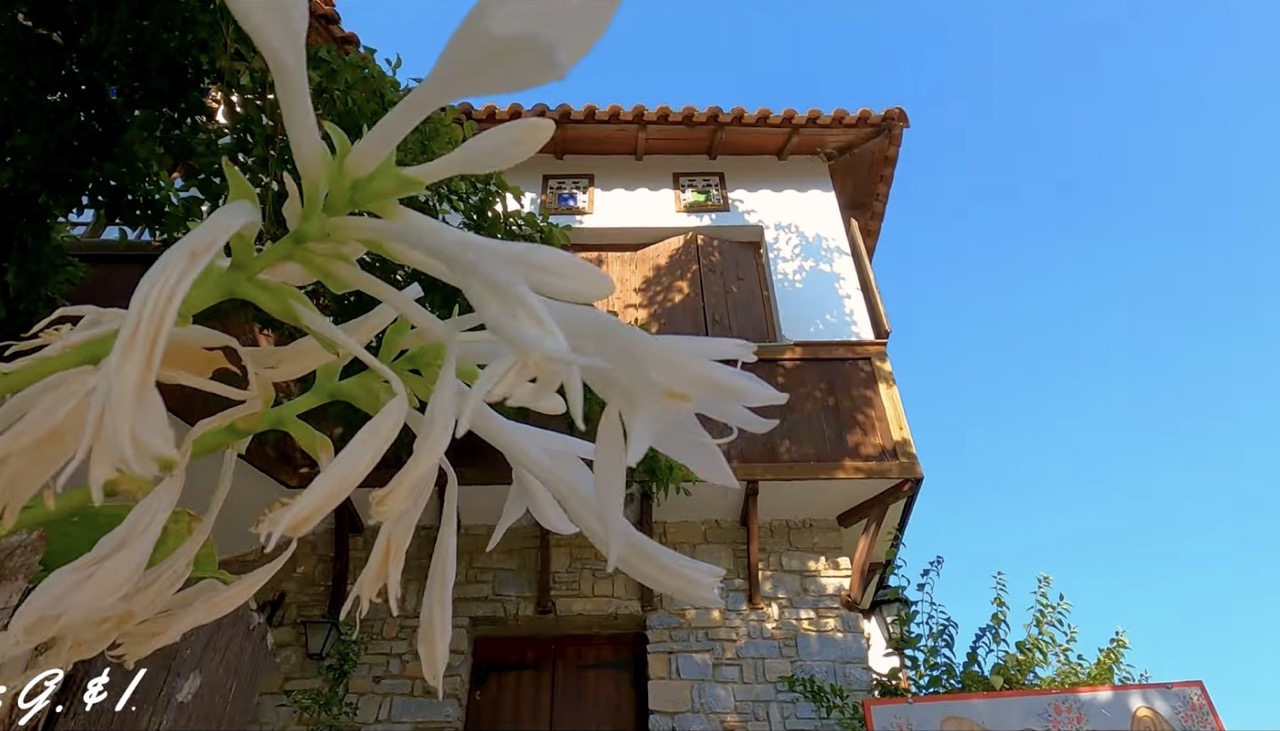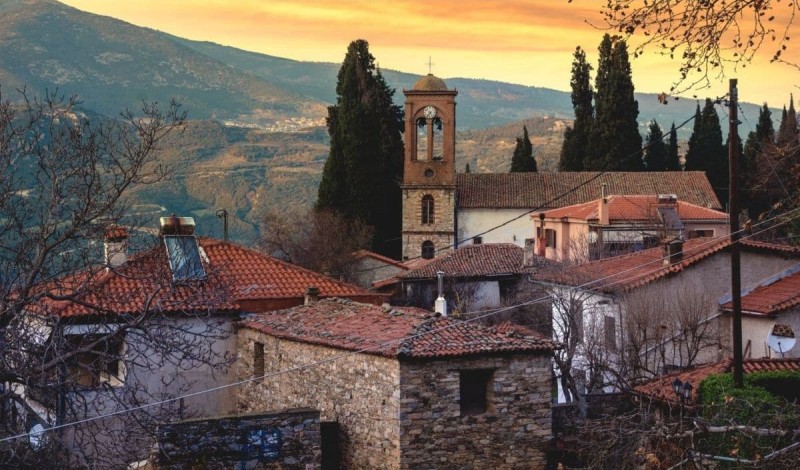
The village of Ampelakia, built on the slopes of Kisavos, not far from Tempi, recently became the scene for the filming of the “Red River” series by Manosos Manosakis. Of course, this was not the brightest moment in their history.
As you can see, since the 18th century the Ambelakiots people have played an important role in the history of the region. Incidentally, check out the quiet village of Epirus with its stone-built houses and dense oak forests.
Stone houses with tiled roofs hang over the wooded slopes of Kissavos, 5 kilometers from Tempi and 30 kilometers from Larissa. People from all the surrounding areas gather here on weekends to eat delicious meats in the square’s restaurants, temporarily interrupting the peaceful daily life of the locals.
As thousands of visitors visit here every year, attracted by the beauty of the place and the great past of settlement, they are now used to it. They return to their rhythm on weekdays, sipping coffee under the square’s plane trees, talking about the present and perhaps even their lucky ancestors.
The education, progress and ingenuity and desire of the people who lived in Ampelagia in the 18th century gave the village an inestimable value. The purple cotton threads, the “Common Fellowship” with its 6,000 members and 17 branches across Europe, the Schwartz Houses, the Manireos School, are captured with photographs and texts in at least 350 special publications.
By the 18th century, the people of Ampelaki spoke four languages fluently and in 1749 the Hellenic Museum was taught by renowned scholars of the time. Maniarios School is one of three schools in the village where children have been learning letters for free since 1773. The Diocesan Palace functioned from 1767 to 1831.
With all this in mind, you will walk “beyond” Agios Athanasios – the “back” neighborhood of Agia Paraskevi. In the district of Chalkia, with the mansion of Solomos, you will be in the neighborhood of Despodis, with a stone bridge built at the same time as the school of Maniario. Then you will pass the main road with the demolished mansion of Dimitrios Schwartz and the ruined mansion-monument bearing the name of Georgios Mavros (Schwartz).
The wood-carved single-aisle church of Agios Georgios is one of the important ecclesiastical attractions in Ampelakia. It was built between 1480 and 1520 and is the only one with an enthroned figure of St. George. On its ceiling is the “dance” – a circular wooden sculpture with 12 sides representing the 12 apostles – under which rituals were celebrated. The gilded iconostasis is thought to have been added in the 1721 renovation. The church has a nice front with an old plane tree, which the grandparents say is 1,100 years old. Of interest are Agios Athanasios, built before 1880, and Agia Paraskevi from 1885.
Inside Ampelakia you will find 13 tubes and another 5 plates around them. You can also see the ruins of three towers built in 1750.

Mansions of Ampelakia
Scattered across the village, declared a traditional settlement, 17 mansions were built between 1787-1810. They consisted of two or three stories and had battlements with a castle-like appearance, small openings at the top, and skylights with colored glass. Their roofs consisted of wooden tiles and chagnisi (tops of upper storeys). The floor where the family lived was the bed, i.e. the central space, surrounded by ottomans and raised sofas.
Common Fellowship
A cooperative of merchants, artisans and red thread manufacturers flourished in Ampelakia in the late 18th and early 19th centuries. It was the first and best cooperative organization in Greece during the Turkish occupation.
The Ampelaki people developed the art of spinning and dyeing by spinning cotton and dyeing it red with the roots of the rice plant or erythrodanon (Rubia tinctoria). At the same time, they established relationships with European merchants and learned how to export their textiles. The first “fellowship” was formed in 1750-1760 and within a few years others were established, employing 1,000 artisans.
In 1778, the leaders of the various societies decided to unite with George Mauro or Schwartz in the “Common Fellowship and Brotherhood of the Ampelagias”. Shareholders in the company are all village residents who can own one to four cooperative shares, each costing 5,000 kraski (1,700 francs). By 1780, cooperative members had reached 6,000, and red threads from 24 workshops were being exported throughout Europe. Cooperatives and branches were established in European cities with Ambelaki agents and staff. The cooperative development lasted until 1812, when it was dissolved.
Schwartz House
Whatever one may think of the mansions of the Ampelakias, the three-story home of Georgios Mavros (Schwartz), leader of the “Gainese Syntropias,” surpasses it. It was founded in 1787 and completed in 1798. It took 8 years to build and 3 years to paint and decorate the whole thing. The result is Ambelaki architecture, a combination of European Baroque and Moroccan and Asia Minor influences, the likes of which cannot be found anywhere else in Greece.
In the summer apartments of the second floor, where meetings were also held, the woodwork, onda and the eagle’s fireplace stand out. In this room, the decoration of the ceiling with a pomegranate symbol in the center is unique. The paintings on the third and second floors are filled with symbols of prosperity and happiness, such as peacocks, fruits, and flowers, along with depictions of Constantinople and the Bosphorus.
The mansion has three watchtowers and is full of hideouts and secret passageways. A private bank operates on the mezzanine floor and a vault (in Turkish, Turkish) on the ground floor. It is full of paintings, has an armored door, a hatch to drop gold, iron bars and battlements.
After years of lying in ruins, Larisa’s ancient Efrat has fortunately been given the green light to proceed with restoration projects expected to be completed in 2023.
In the village you can also find the Mola House which houses the Folklore and History Museum. It represents the everyday life of the inhabitants, with clothing, photographs, utensils, tools, decorative objects and furniture arranged to represent Ambelagi’s home from 2021 onwards.
Source: athensmagazine.gr
Join our Viber group to be the first to hear about the most important news

. “Professional creator. Subtly charming web advocate. Unapologetic problem solver. Devoted student.”

-og.jpg?t=y7SX8xaU-xsaLEgDfmnp4A)


More Stories
B. Kigilias: Emergency meeting on civil defense due to multiple and simultaneous explosions
The number 1 of the gangster criminal organization “Contos” is in prison
Maroosee: Shooting outside nightclub – one dead, one injured